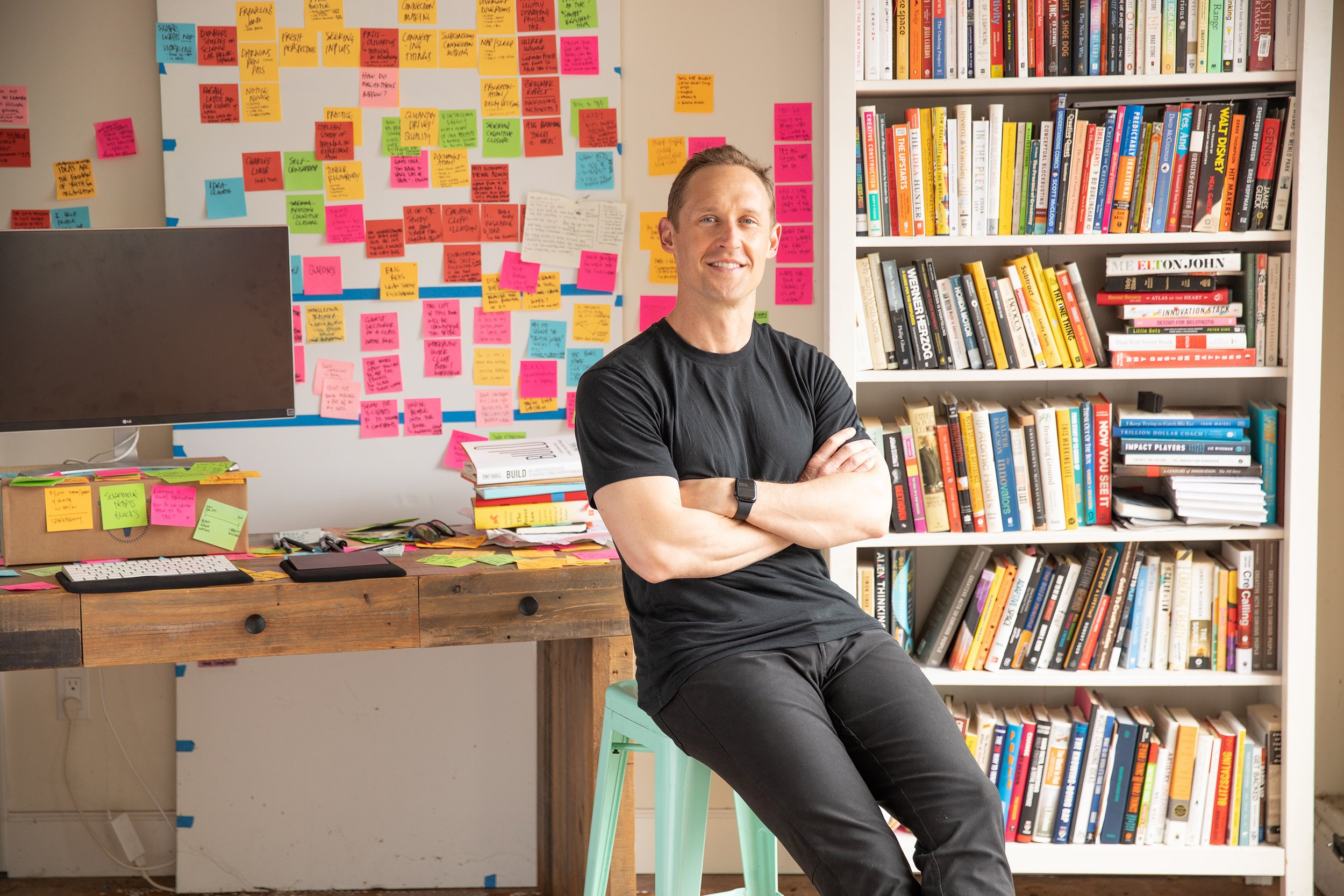
Methods of the Masters
A blog on the art & science of creative action.
Be A Skeptic
Design is an inherently optimistic field. We are, after all, trying to make the world a better place. But this optimism can lead to naïveté, and can actually hinder real progress, if left unchecked.
Try More Than One
One of the most fantastic definitions I’ve ever heard comes from an anonymous seventh grader in Ohio: “Creativity is doing more than the first thing that comes to your mind.”
Think Like A Founder
How do you know when it’s time to iterate?Founders have to be willing to adapt based on real-time feedback, and iterate accordingly.
Look Up To Somebody
Music executive Jonathan Azu uses a simple formula to remain inspired: every two weeks, he meets with a leader he admires.
Get A Side Project
Marcus Hollinger is a modern day renaissance man. A steady gig as SVP of Reach Records didn’t keep him from starting coffee company on the side. Far from sapping him of creative energy, the side-hustle fuels fresh thinking.
Be Your Own Customer
Your company’s next product might be hiding in plain sight: where you’re already servicing your own needs. Thinking about yourself as the first customer among many, instead of the total addressable market, is a game-changer.
Call A Time Out
Perhaps the greatest thing we can do to establish trust, is to address the elephant in the room — “Is this person safe?” — head on, straight out of the gate. Inspired by Ise Lyfe.
Set Obscene Deadlines
Some of the most creative people I know — from Lin Manuel-Miranda to Whitney Burks — share a common, creative secret: “obscene, ostentatious deadlines.”
Make Your Space Yield Connections
Maya Angelou and Thomas Edison gave me permission to keep my space messy. It’s not unlike one of those detective whodunits, every available surface covered in conspiracies. If you peeked into my garage, you’d probably think, “I hope he finds the killer…”
Leverage Sick Days
We see sick days as days we can’t work. As a few classic examples of transformation demonstrate, perhaps we should see them as a gift — an opportunity to receive a new vision of the future.
Disrupt Bias
How can a leader create an environment that’s hostile to bias, and one that cultivates the emergence of new ideas? Trier Bryant provides a simple framework to answer this very question.
Singletask
Stanford Professor Clifford Nass studied hundreds of students, to explore what distinguished self-proclaimed “multitaskers” from the rest of us. His conclusions, and their implications, won’t surprise you.
Learn for Yourself
The best creators are constantly learning. There’s immense value in doing something you’re not good at, specifically for the sake of seeing from a fresh perspective.
Community Relevance is the New Cultural Relevance
Gavin Guidry, Creative Director at R/GA, says, “If my experience has taught me one thing, it’s this: to get the results clients are looking for, they need to forget about cultural relevance, and focus on community relevance.”
Balance Input & Output
A vibrant, productive creative practice is comprised of equal parts inspiration and effort. Knowing when you need which is an essential capability.
Stop Thinking
Ownership is an exceptional innovation diagnostic. Who came up with the good idea? A dysfunctional team will have a very clear memory of a very straightforward process.
Roast Your Problem
Some problems can be hard to see from different perspectives. William Hardaway, a design leader in higher education recommends taking a light-hearted approach to exposing unexplored angles.
Gather Lunatics
Gathering likeminded learners (aka lunatics) exponentially reduces the ramp of a new pursuit, normalizing courage in the face of intimidation. YouTube sensation Mr. Beast breaks it down here.



















